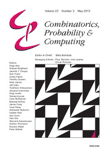
COMBINATORICS PROBABILITY & COMPUTING
Scope & Guideline
Fostering High-Impact Research in Mathematics and Beyond
Introduction
Aims and Scopes
- Combinatorial Structures and Properties:
The journal focuses on the exploration of various combinatorial structures, including graphs, hypergraphs, and set systems, examining their properties, relationships, and applications. - Probabilistic Methods in Combinatorics:
A significant emphasis is placed on probabilistic techniques used in combinatorial contexts, addressing topics such as random graphs, percolation theory, and probabilistic algorithms. - Computational Complexity and Algorithms:
Research on the design and analysis of algorithms for combinatorial problems is a core area, including discussions on efficiency, approximation, and computational limits. - Graph Theory and Its Applications:
The journal extensively covers topics in graph theory, including Ramsey theory, coloring problems, and the study of specific graph classes, reflecting their relevance in various applications. - Connections to Statistical Mechanics and Physics:
There is a unique contribution through the exploration of connections between combinatorial structures and concepts in statistical mechanics, particularly in the analysis of phase transitions and probabilistic models.
Trending and Emerging
- Random Structures and Phase Transitions:
There is an increasing focus on random structures, particularly the study of phase transitions in random graphs and hypergraphs, which suggests a trend towards understanding complex behaviors in large systems. - Algorithmic Combinatorics:
The rise of algorithmic approaches in combinatorial problems is evident, with a growing interest in developing efficient algorithms for complex combinatorial structures and their applications in various fields. - Interdisciplinary Connections with Machine Learning:
Emerging research is exploring the connections between combinatorial optimization and machine learning techniques, indicating a trend towards applying combinatorial methods to solve problems in data science and artificial intelligence. - Advanced Probabilistic Models:
There is a notable increase in studies employing advanced probabilistic models to analyze combinatorial structures, such as Gibbs measures and random walks, reflecting a deeper integration of probability theory with combinatorial methods. - Dynamic and Adaptive Systems:
Research on dynamic systems and adaptive algorithms is gaining traction, focusing on how combinatorial structures evolve over time and how algorithms can adapt to these changes.
Declining or Waning
- Classical Ramsey Theory:
Although Ramsey theory has been a staple of combinatorial research, recent papers suggest a declining emphasis on classical results, possibly due to saturation in this area and a shift towards more complex and generalized problems. - Static Graph Properties:
Research focused solely on static properties of graphs, without probabilistic or dynamic considerations, appears to be waning, as newer studies increasingly incorporate probabilistic models and dynamic aspects. - Elementary Combinatorial Techniques:
There is a noticeable decrease in the publication of papers relying strictly on elementary combinatorial techniques, as the field moves towards more sophisticated methodologies involving probabilistic and computational approaches.
Similar Journals

DISCRETE MATHEMATICS
Pioneering research in discrete mathematics and beyond.DISCRETE MATHEMATICS, published by Elsevier, is a leading journal dedicated to the field of discrete mathematics and combinatorics, with a distinguished presence in the academic community since its inception in 1971. With an ISSN of 0012-365X and an E-ISSN of 1872-681X, this esteemed journal has firmly established itself within the Q1 category for Discrete Mathematics and Combinatorics, and Q2 for Theoretical Computer Science as per the 2023 metrics, underscoring its pivotal role in advancing research in these vital areas. DISCRETE MATHEMATICS is highly regarded, reflected in its Scopus rankings, where it stands at #44 out of 92 in its primary category, contributing significantly to the global discourse on complex mathematical theories and applications. Published from the Netherlands, the journal serves as a crucial resource for researchers, professionals, and students looking to stay informed about the latest innovations and methodologies in discrete mathematics. Though currently not an open-access journal, DISCRETE MATHEMATICS continues to foster a vibrant scholarly community through rigorous peer-reviewed research, promoting a deeper understanding of the mathematical structures that underpin both theoretical and applied science.
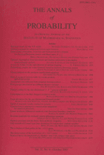
ANNALS OF PROBABILITY
Shaping the Future of Statistical UnderstandingANNALS OF PROBABILITY, published by the Institute of Mathematical Statistics (IMS), is a premier academic journal dedicated to the field of probability theory and its applications. With an impressive impact factor and ranked within the top quartile (Q1) in both Statistics and Probability and Statistics, Probability and Uncertainty categories as of 2023, this journal serves as a vital platform for researchers and practitioners in the field. The journal has a significant convergence period from 1996 to 2024, reflecting its enduring contribution to the scientific dialogue surrounding probabilistic methods and theory. The journal garners a high standing in Scopus rankings, holding a remarkable 35th position out of 278 in Mathematics and boasting an 87th percentile ranking, underscoring its influence and reach. While it does not provide Open Access options, its rigorous peer-review process ensures the publication of high-quality research that advances the understanding and application of probability across various disciplines. Researchers, professionals, and students alike will find the ANNALS OF PROBABILITY instrumental in their academic pursuits and professional development in the evolving landscape of probability and statistics.

Journal of Combinatorics
Fostering Excellence in Combinatorial ScienceJournal of Combinatorics is a premier academic journal dedicated to advancing the field of combinatorial theory and its applications. Published by INT PRESS BOSTON, INC, it aims to provide a robust platform for researchers, professionals, and students to disseminate their findings and engage with cutting-edge developments in combinatorics. With a focus on high-quality, peer-reviewed articles, the journal fosters rigorous mathematical discussions surrounding various facets of combinatorial structures, graph theory, design theory, and combinatorial optimization. Although currently not available as an Open Access journal, the Journal of Combinatorics plays a vital role in enriching the mathematical sciences and serves as an essential resource for academics seeking to stay updated with the latest trends in combinatorial research. By maintaining a commitment to excellence and innovation, this journal is indispensable for anyone looking to deepen their understanding in this critical area of study.

GRAPHS AND COMBINATORICS
Shaping the future of mathematical theory and practice.GRAPHS AND COMBINATORICS, published by SPRINGER JAPAN KK, is a premier academic journal dedicated to advancing the field of discrete mathematics and combinatorial theory. ISSN 0911-0119 and E-ISSN 1435-5914 signify its scholarly accessibility, providing a platform for the dissemination of cutting-edge research from 1985 to the present. With a 2023 quartile ranking of Q2 in Discrete Mathematics and Combinatorics and Q3 in Theoretical Computer Science, the journal showcases influential studies that significantly contribute to these domains. Situated in Tokyo, Japan, it harnesses a global perspective on contemporary mathematical challenges. Although lacking open access options, GRAPHS AND COMBINATORICS remains a vital resource for researchers, professionals, and students seeking to deepen their understanding of mathematical graph theory and combinatorial structures. Engage with its significant findings and join the discourse that shapes future research and applications in these inspiring fields.
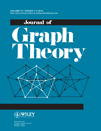
JOURNAL OF GRAPH THEORY
Fostering Insightful Discoveries in Graph TheoryJOURNAL OF GRAPH THEORY, published by WILEY, stands as a pivotal resource in the fields of Discrete Mathematics and Combinatorics, as well as Geometry and Topology. Since its inception in 1977, this esteemed journal has fostered the dissemination of influential research, currently categorized in the prestigious Q1 quartile according to the latest metrics for 2023. With an ISSN of 0364-9024 and an E-ISSN of 1097-0118, it caters to a global readership of researchers, professionals, and students dedicated to advancing their knowledge in graph theory. By maintaining a strong rank in Scopus—39th out of 106 in Geometry and Topology, and 38th out of 92 in Discrete Mathematics and Combinatorics—it reflects its significance and impact within the academic community. Although it does not offer open-access options, its rigorous peer-review process ensures that only high-quality original research is published, thus reinforcing its reputation as a leading journal in this mathematical domain.
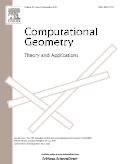
COMPUTATIONAL GEOMETRY-THEORY AND APPLICATIONS
Charting New Territories in Computational Geometry ResearchCOMPUTATIONAL GEOMETRY - THEORY AND APPLICATIONS is a premier academic journal published by Elsevier, specializing in the interdisciplinary field of computational geometry. Since its inception in 1991, this journal has had a significant influence on the advancement of computational mathematics, offering a platform for innovative research that explores the theoretical and applied aspects of geometry and its applications in various scientific domains. With a 2023 impact factor placing it in the Q2 category for Computational Mathematics and Geometry and Topology, researchers can trust the rigor and relevance of the work published here. While the journal does not currently offer an open-access option, it remains highly influential, ranked in the mid-range percentile across multiple categories including Computational Theory and Mathematics and Control and Optimization. Therefore, it serves as an invaluable resource for researchers, professionals, and students passionate about pushing the boundaries of knowledge in computational geometry and its myriad applications. The ongoing publication commitments extend until 2025, further solidifying its role in shaping the future of this dynamic field.
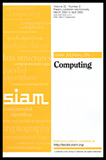
SIAM JOURNAL ON COMPUTING
Pioneering Research at the Intersection of Mathematics and Computing.Welcome to the SIAM Journal on Computing, a premier publication of SIAM Publications dedicated to advancing the field of computational science. Established in 1984, this journal provides a platform for groundbreaking research and theoretical advancements that shape the landscape of both Computer Science and Mathematics. With an impressive impact factor and consistently ranking in Q1 quartiles for its categories, the journal remains an essential resource for scholars looking to contribute to innovative computational theories and methodologies. Although not currently an open-access journal, the SIAM Journal on Computing offers rigorous peer-reviewed articles, ensuring high-quality contributions that appeal to researchers, professionals, and students alike. As we converge towards 2024, this journal continues to play a vital role in influencing future research directions and fostering an academic community devoted to the exploration of computational challenges. Join us in exploring the forefront of computing research!
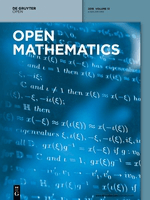
Open Mathematics
Empowering Global Researchers with Open MathematicsOpen Mathematics, published by DE GRUYTER POLAND SP Z O O, is a prominent peer-reviewed journal that has been a vital platform for disseminating innovative research in the field of mathematics since its inception in 2015. With an impressive impact factor reflected by its Q2 ranking in the miscellaneous mathematics category and a commendable Scopus rank of #91 out of 399, it positions itself as a significant contributor to the mathematical community. This open access journal, headquartered in Poland, welcomes submissions that tackle diverse mathematical theories, applications, and methodologies, fostering knowledge exchange among researchers, professionals, and students globally. Since its launch, Open Mathematics has focused on bridging the gap between theoretical advancement and practical applications, making it an essential resource for anyone seeking to stay at the forefront of mathematical research and innovation. The journal offers easy online access, enhancing the visibility and impact of the valuable work published within its pages.

DISCRETE MATHEMATICS AND THEORETICAL COMPUTER SCIENCE
Connecting Theory with Practice in Computer Science and Discrete MathematicsDISCRETE MATHEMATICS AND THEORETICAL COMPUTER SCIENCE, published by DISCRETE MATHEMATICS THEORETICAL COMPUTER SCIENCE in France, stands as a significant open-access journal since 1997, publishing innovative research articles within the intersecting disciplines of discrete mathematics and theoretical computer science. With an ISSN of 1462-7264 and an E-ISSN of 1365-8050, this journal aims to provide a platform for scholarly discourse and dissemination of knowledge, making it accessible to a global audience. It is recognized for its contributions, achieving a Q2 ranking in both Computer Science (Miscellaneous) and Discrete Mathematics and Combinatorics, alongside a Q3 ranking in Theoretical Computer Science as of 2023. The journal’s rigorous selection process ensures that only high-quality research is published, promoting advancements in these critical areas of study. Researchers, professionals, and students alike can benefit from its comprehensive articles that not only enhance theoretical understanding but also foster practical applications in the ever-evolving landscape of computer science.
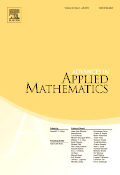
ADVANCES IN APPLIED MATHEMATICS
Pioneering Research for Practical Mathematical ApplicationsADVANCES IN APPLIED MATHEMATICS, published by ACADEMIC PRESS INC ELSEVIER SCIENCE, is a prestigious journal that has served the mathematical community since 1980. With its ISSN 0196-8858 and E-ISSN 1090-2074, the journal is based in the United States, specifically in San Diego, CA. As a leading periodical in the field, it holds a notable Q2 ranking in Applied Mathematics and has been consistently ranked in the 43rd percentile among similar journals, illustrating its relevance and impact within the discipline. Although not an Open Access journal, ADVANCES IN APPLIED MATHEMATICS plays a crucial role in disseminating significant research findings, theoretical studies, and innovative applications of mathematics that address real-world problems. Researchers, professionals, and students alike will find valuable insights in its carefully curated publications, making it an essential resource for those looking to advance their understanding and application of mathematics.